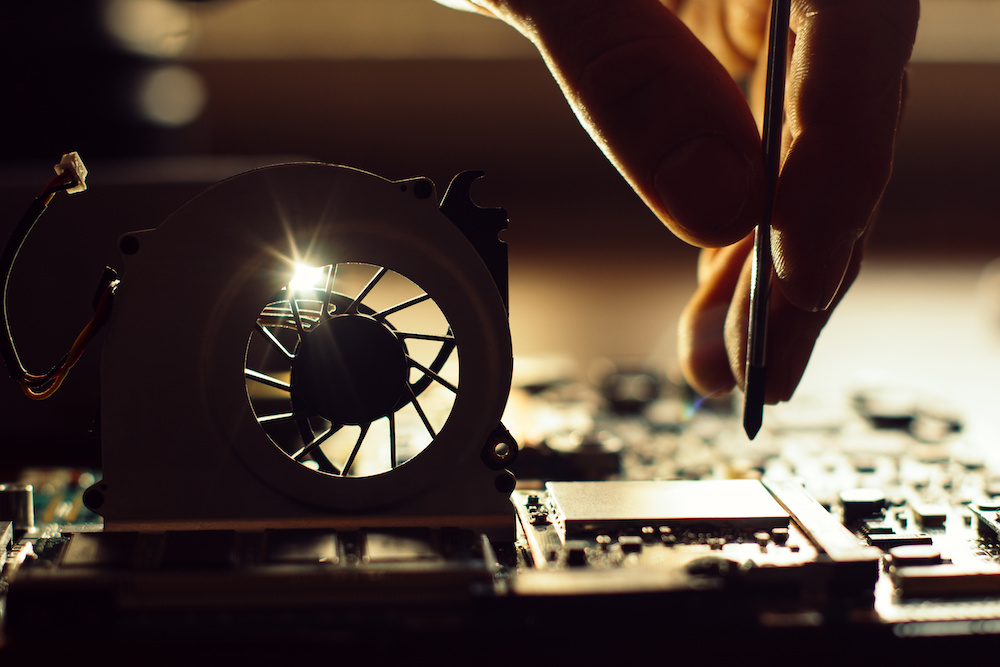Do Motherboards Come With Screws?
We may earn a commission for purchases using our links. As an Amazon Associate, we earn from qualifying purchases.
Building your own rig ensures you get a PC that performs exactly as the way you need it to.
Whether it’s for gaming, studying, working, or all of them, you’d be able to include the hardware specs you want.
One of the most important hardware components you’ll have to pick is the motherboard.
It will hold all of your PC’s crucial components, from the CPU to the memory, as well as provide connectors for your computer’s peripherals.
In that case, do motherboards come with screws, or do you have to buy them separately?
Do Motherboards Come With Screws?
When building your PC, is it safe to assume that your motherboard will come with its own set of screws?
The answer depends on the manufacturer. Some brands make motherboards complete with screws, but the majority don’t.
If they do, note that what they provide are the screws for securing your mobo to the standoffs and not to the case.
Essentially, mounting screws and standoffs come with the PC case.
In other words, you will find motherboard standoffs included when you buy your computer case.
If your motherboard came first, check the documentation of the PC case you wish to buy.
You want to make sure that no mismatching occurs in the board and the standoffs, even if they are from different manufacturers.
ALSO READ: What Screws To Use for Motherboards?
What Are Standoffs?
Standoffs, also called spacers, are used to separate two parts in an assembly. They can be made of metal, plastic, and other materials.
Do note that standoffs vary in shapes and sizes. That said, not all PC cases will support all form factors of motherboards.
It’s very important to find a PC case compatible with your chosen motherboard so that you won’t have any issues with installation or mounting.
PC Case and Board Form Factor
A PC case will usually come with an assortment of little devices and accessories.
Aside from screws, it often includes case feet, brass standoffs, expansion inserts, and a power cord.
PC cases themselves are usually categorized based on three form factors.
The form factor refers to the physical dimensions and similar aspects of a motherboard, including the screw hole locations.
Generally, motherboards fall under three form factors: ATX, MicroATX, and Mini-ITX.
Each board type has a standard size. In particular, ATX boards measure 12 by 9.6 inches.
MicroATX boards are smaller, measuring 9.6 X 9.6 inches, while Mini-ITX is the smallest, measuring 6.7 inches square.
Typically, a case that supports a larger board can also host mobos of smaller form factors.
However, we still recommend that you check the case’s specs before buying just to be sure.
Generally speaking, ATX-compatible PC cases are most likely compatible with MicroATX and Mini-ITX boards.
Motherboard Form Factor and Standoffs
Given the difference in their dimensions, you will find the screws to mount them at different places.
In general, ATX boards use a more standard mounting layout. If you have an ATX case, it should come with nine motherboard screws.
Meanwhile, MicroATX boards come with two holes in the same location for the standoffs. However, it also has four holes, one on each corner.
In general, MicroATX boards will only require about six standoffs.
Why Motherboards Don’t Often Come With Screws
At first glance, it might seem odd that many motherboards don’t come with screws like other hardware components do, particularly CPUs and power supplies.
There are several reasons motherboards don’t typically come with screws.
Firstly, not all cases support the same motherboard form factor.
As such, manufacturers have to leave space in their PCB (printed circuit board) so that users can mount their boards properly in different cases.
For example, if you’re using a MicroATX board in a PC that supports a larger board, you will need different types of screws and standoffs.
Secondly, there is no strict standard for the type of screw to use to attach a motherboard to the PC case.
Motherboard manufacturers tend to have varying preferences for mounting screws.
By not incorporating screws, users will have more flexibility in choosing the board that suits their needs.
Most Common Types of Motherboard Screws
Apart from the standoff screws, your motherboard may also require different screws for different settings.
Below are some of the most common mobo screws you will come across:
Riser Screw
This type of screw usually comes with the PC case, although some motherboard manufacturers offer them too.
Riser screws are typically short and come in either M3 or M4 sizes.
They are also made of brass and look like hexagonal bolts, with a male thread sticking out in one end and a female thread in the other.
Many PC builders prefer using riser screws because they help mount the mobo in such a way that they don’t come in contact with the metal case.
Also, riser screws let you route cables underneath the board, improving airflow and making extra room for the power cable.
Because of their structure, riser screws create a nice gap between the motherboard and the other components of the CPU.
As you can imagine, this gap is very important because the CPU is the component that produces the most amount of heat in a computer system.
By creating a gap, you can ensure better air circulation and prevent your hardware from overheating.

M.2 Screws
Some motherboards, especially newer models, will come with M.2 screws, which you will use to install an SSD.
An M.2 SSD is often used in internally mounted storage expansion cards.
It enables high-performance storage in smaller devices, like laptops and tablets, but you can also use it in desktop motherboards.
M.2 screws hold an SSD in place and keep it from vibrating or moving inside.
These screws are tiny, so they are easy to lose if you’re not careful during installation.
Cooling Solution Screws
Since they are likely to overheat, motherboards require fans or a cooling pump.
To attach these parts, you need a special set of cooling solution screws.
These screws are usually included with the cooling device you buy separately; they don’t come with the PC case or the motherboard.
If you’re using an old fan from an existing computer and don’t have the screws anymore, the standard screw type is the 6-32X1 1/4” screw.
Don’t forget to purchase the corresponding nuts or washers if you need them for the installation.
What To Do if Your Case Doesn’t Have Screws
It’s very rare that a PC case will not have screws for attaching the motherboard and other hardware components.
However, if your PC case doesn’t have screws or you lost them, you can always buy some from your local PC hardware shop.
Luckily, motherboard screws are the same for most models. In particular, most mobos will make use of M3x5 screws.
These are flat-head screws with a diameter of three millimeters and a length of five millimeters.
You can find them almost anywhere, and they are pretty inexpensive too.
What about standoffs? While they are universal, some high-end PC cases come with exclusive standoffs.
Other models even come with clips.
Also, a few PC cases use plastic standoffs, which are threaded pieces with pointed tips and screw-like bottoms.
While installing special standoffs is the same as universal standoffs, you might find it challenging to find a replacement piece if you lose any of your special standoffs.
Like motherboard screws, universal standoffs are inexpensive. You can buy a pack of threaded standoffs from Amazon for just about $6.
Can You Use Old Motherboard Screws?
Yes, definitely. If you’ve taken an old mobo from its original case, you don’t have to buy new screws to mount it to your new computer.
Nevertheless, you still need to have the right standoff screws.
In other words, if the original standoffs fit into the new PC case, then feel free to re-use them.
Just like motherboard screws, threaded standoffs are universal, especially for standard PC cases.
The same cannot be said for non-standard cases, though, which most likely use unique standoffs.
If you are using a unique case, it’s important to check your PC case manual to determine the specific type of standoffs and screws needed for installing the motherboard.
Another thing to keep in mind is that you don’t have to use all the standoffs for your motherboard.
However, if there are any cables that you have to push into the board near the screw, it will certainly help since you don’t want your motherboard to bend from lack of support.
The idea is to keep your motherboard secure inside your PC case. If leaving out one standoff doesn’t impact your board, then it’s fine.
RELATED: Do Motherboards Come With SATA Cables? (Guide)
Motherboard Screws
Do motherboards come with screws? Generally, motherboards don’t come with screws.
Instead, screws and standoffs come with the PC case, although some mobos require specialty screws.
The most commonly used screws for motherboards are riser screws, M.2 screws, and cooling solution screws.
If your PC case doesn’t have screws for mounting the motherboard or you lose some of them, you can always buy a spare from your local PC store.
Unless you’re using a unique case, you can purchase universal standoffs and screws to mount your mobo securely.

